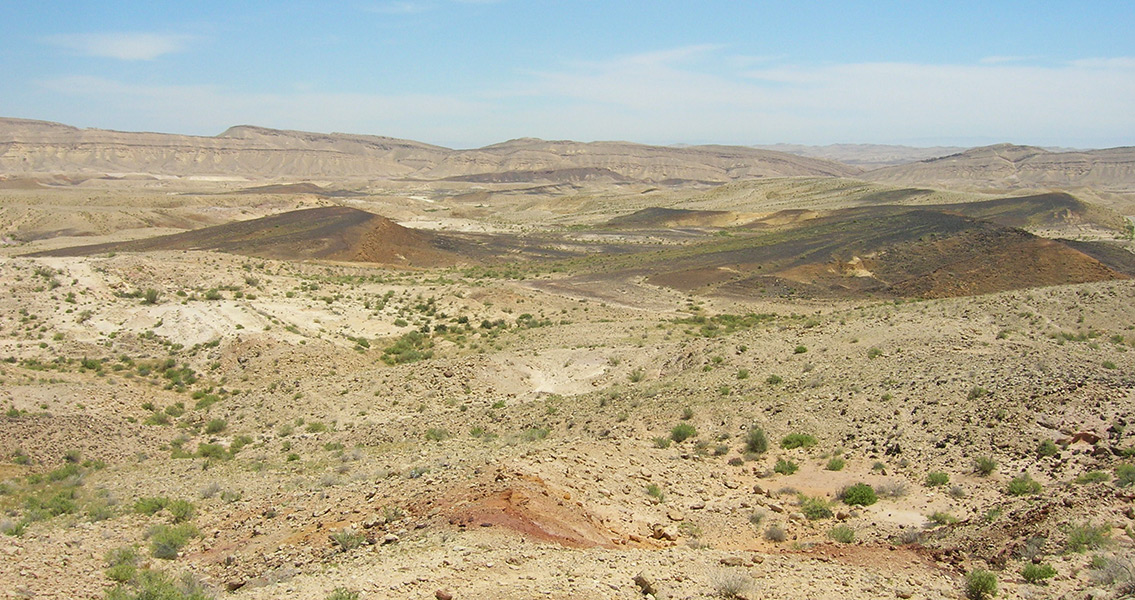<![CDATA[Over 100 prehistoric 'cult sites' have been discovered in the Eilat Mountain range of the Negev Desert, Israel. At the sites, which date from around 8000 years ago, archaeologists have discovered a variety of intriguing stone objects. The team of archaeologists, led by Uzi Avner of the Arava-Dead Sea Science Center, discovered stone circles measuring between 1.5 and 2.5 metres across. Surrounding these circles were penis-shaped installations, pointing towards them. Also found were standing stones reaching about 80 centimetres tall, stone bowls and anthropomorphic stone carvings. The so-called 'cult sites' were often found clustered together. In one particular area measuring just 0.8 square kilometres (less than 200 acres), 44 cult sites were discovered. "Taking in[to] consideration the topography, environmental conditions and the small number of known Neolithic habitations in the general southern Negev, the density of cult sites in this region is phenomenal," the team's report stated. "The sites' location on the igneous mountains is unique, very different from the known settlement pattern of sites of the southern Negev." The archaeologists' work was published recently in the Journal of the Israel Prehistoric Society. Little is known about the activities that occurred at these sites, 8,000 years ago. It is thought that animal sacrifices could have taken place at the cult sites, as bones have been discovered. Possibly, this indicates that the stone circles were the location of ritual activities of some kind. Archaeologists are now working on decoding the meaning of the artefacts and structures found in the Eilat Mountains. It appears that both fertility and death are symbolically represented at the sites. In addition to the penis-shaped structures, the team found some stones have vulva-shaped holes carved into them. The circular arrangements of stones that the penis-shaped structures point to seem to represent females, also. "The circle is a female symbol, and the elongated cell is a male one (phallus)," Avner said in an interview with Live Science. Mortality and death are also represented at the sites. Death is "signified by the burial of stone objects and by setting them upside down," the paper states. In one instance, a humanlike stone carving was found deliberately buried. Fertility and mortality are linked in many cultures, and it appears that the inhabitants of the ancient Negev also combined these two ideas. Combinations of birth and death often relate to ancestral cults. The sites and their contents seem to support this cultic interpretation. That the cult sites were located in such an unusual position, far from normal habitable areas, indicates they were built purely for a ritualistic cult purpose. "Commonly, a broad view is seen from the sites, so possibly, the scenery was [another] element in the selection of their location," the team wrote. Many of the sites contain several installations, some as many as eleven, and numerous stone artefacts. It is clear that the sites were not temporary; they had been used frequently over a significant period of time. Clearly, these 8000-year-old groups had a complex belief system and went to great lengths to ritualistically commemorate their culture. For more information: Image courtesy of Wikimedia commons user: http://upload.wikimedia.org/wikipedia/commons/c/cc/Negev_Geology%2C_Large_Makhtesh_Crater%2C_Negev_Desert%2C_Israel_%28469188863%29.jpg]]>
8000-Year-Old Stone Penises and Vulvas Discovered in Israel
